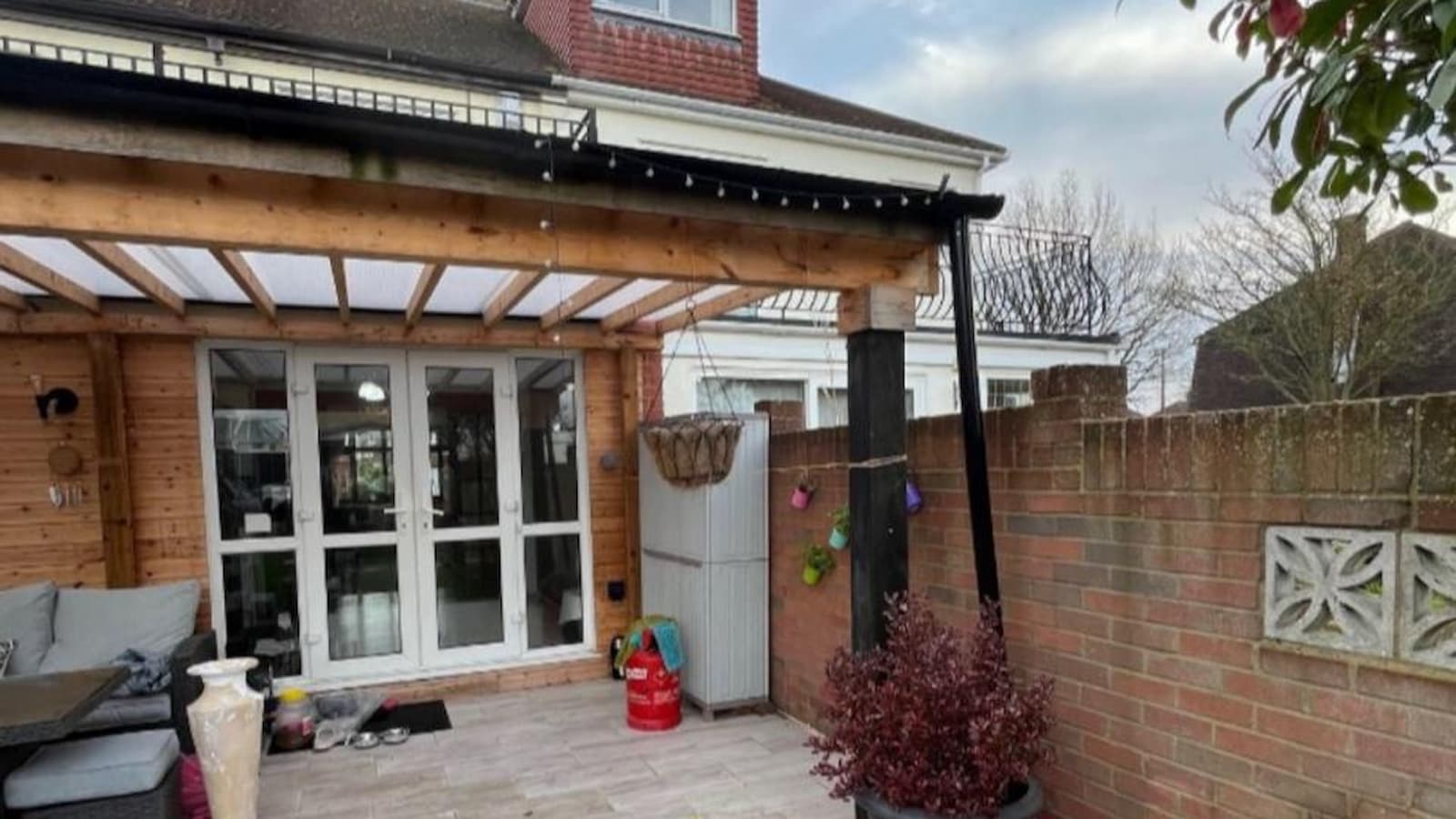Homeowner dodges planning enforcement after minor tweak to detach canopy
Rules stated that he could erect the canopy under permitted development but only if it was a separate structure

A homeowner has avoided planning enforcement action after a large lean-to canopy that he originally attached to the house, was altered to detach it.
The timber framed canopy was built without planning permission and bordered the homeowner and a neighbour's property, prompting an enforcement notice from the council.
However, alterations were made before a site visit could take place and by the time of the inspection it was deemed the canopy no longer needed permission as it was a separate structure and the council voted unanimously to drop the case.
Why was planning permission needed for the canopy?
Often planning permission for a canopy is not required as they can qualify under permitted development rights.
However, if the canopy is larger than 50% of the floor space of the property or the canopy is closer than 3.5 metres to a road then planning permission is required.
In this homeowner's case planning would have initially been required as, according to the council: "It was found that the canopy had been added to an existing projection of solid form and the flat roofed form of the extension, use of materials (timber and felt roof) failed to respect the traditional architectural form and appearance of the main dwelling."
What work was done to make the canopy compliant?
Southend Council were alerted to the property after a complaint was made and an enforcement notice was issued.
Bring your dream home to life with expert advice, how to guides and design inspiration. Sign up for our newsletter and get two free tickets to a Homebuilding & Renovating Show near you.
However, council though discovered during a site visit that the canopy was detached from both the neighbouring and homeowner's house, the felt roof was replaced with a clear plastic roof and all timber cladding was removed.
Planning offers concluded the original breach had been addressed and the canopy would now "be considered under Class E of the General Permitted Development Order as a detached building or enclosure and not under Class A as an extension to the dwelling, which formed the basis of the original assessment".
How did the man avoid punishment?
Despite the alterations, some officials still called for further punishment for the homeowner due to the disturbance towards a neighbour.
Carole Mulroney, Lib Dem councillor for Leigh Ward, stated: "The fact that we close the case but don’t withdraw the enforcement notice means that should they go back to whatever it was before means that we can immediately reactivate it and take action."
Martin Berry, Labour councillor for St Luke’s Ward, lamented the lack of consequences for the homeowner's flouting of the law, stating: "Even though the applicant in this particular case decided he was above the law and decided to completely ignore the enforcement notice there’s not been any action taken against him for that.
“Significant harm has been done to his residential amenity. It’s a massive extension from how it used to be. It was putting his garden into shade. The neighbour, it was overlooking him. He couldn’t sit outside and do the crossword or use the garden during the summer because it was all in shade and he had the neighbours peering across the fence at him all the time.
He expressed disappointment, adding: "It’s a shame that the guy has done this and has got away scot-free.
Despite his concerns, Berry acknowledged the current compliance with permitted development rules, stating: "He’s put it back now to permitted development level so I’m not going to be churlish and vote against this recommendation."
Despite the protestations the council voted unanimously to keep the to not pursue the enforcement.

News Editor Joseph has previously written for Today’s Media and Chambers & Partners, focusing on news for conveyancers and industry professionals. Joseph has just started his own self build project, building his own home on his family’s farm with planning permission for a timber frame, three-bedroom house in a one-acre field. The foundation work has already begun and he hopes to have the home built in the next year. Prior to this he renovated his family's home as well as doing several DIY projects, including installing a shower, building sheds, and livestock fences and shelters for the farm’s animals. Outside of homebuilding, Joseph loves rugby and has written for Rugby World, the world’s largest rugby magazine.
